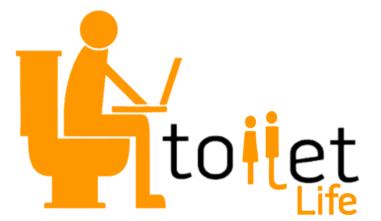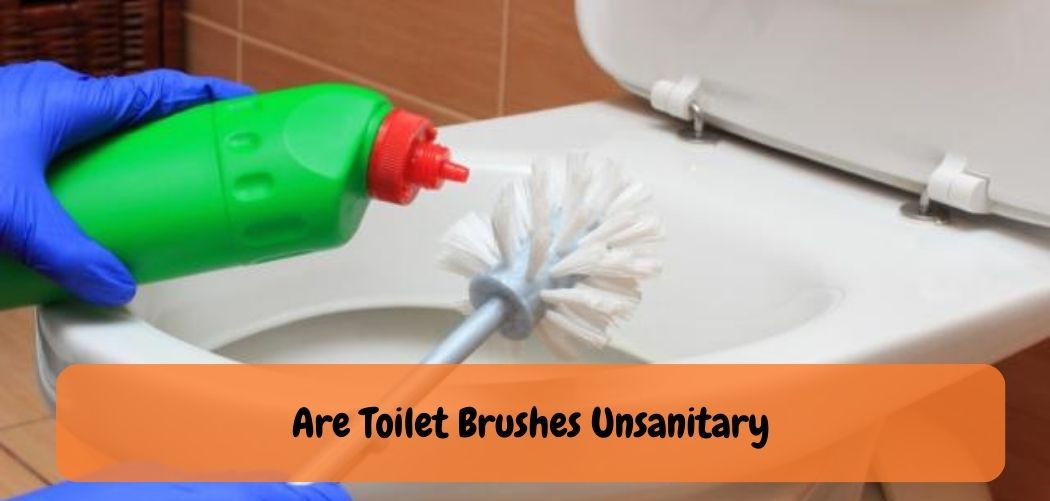Toilet brushes play a vital role in maintaining cleanliness and hygiene in our bathrooms. However, there has been ongoing debate and concern regarding the sanitary nature of toilet brushes.
Some individuals question whether these cleaning tools can harbor germs and pose a risk to our health. Let’s delve into the discussion and dispel any misconceptions surrounding the hygiene of toilet brushes.
In this informative guide, we will explore the topic of toilet brush sanitation and shed light on whether toilet brushes are unsanitary or if there are ways to ensure their cleanliness and hygienic use.
By understanding the potential risks, proper cleaning techniques, and alternative cleaning options, we can make informed decisions about the use of toilet brushes and maintain a clean and sanitary bathroom environment.
The Toilet Brushes Unsanitary
Toilet brushes are essential tools for maintaining cleanliness in our bathrooms. However, there has been ongoing concern and speculation about the sanitary nature of toilet brushes. In this informative guide, we will delve into the topic of whether toilet brushes are unsanitary and provide valuable insights to help you make informed decisions regarding their use and hygiene.
Section 1: Understanding Toilet Brush Hygiene
1.1 Potential for Bacterial Contamination:
Toilet brushes can potentially harbor bacteria and germs, especially if not properly cleaned and maintained.
The moist and warm environment of a bathroom can create conditions conducive to bacterial growth.
1.2 Proper Cleaning Techniques:
Rinse the toilet brush thoroughly after each use to remove any residual waste.
Use a disinfectant, such as bleach or toilet bowl cleaner, to sanitize the brush regularly.
Allow the brush to air dry completely before storing it.
Section 2: Addressing Concerns and Debunking Myths
2.1 Myth: Toilet Brushes Spread Germs Throughout the Bathroom:
While it is true that toilet brushes can harbor bacteria, proper cleaning practices minimize the risk of spreading germs.
Ensure the brush is thoroughly rinsed, sanitized, and dried after each use.
2.2 Myth: Disposable Toilet Brushes Are More Hygienic:
Disposable toilet brushes may offer convenience, but they are not inherently more hygienic than reusable ones.
Proper cleaning and maintenance of a reusable toilet brush can ensure its sanitary use.
Section 3: Exploring Alternative Cleaning Options
3.1 Silicone Bristle Brushes:
Silicone bristle brushes are easier to clean and may be less likely to trap bacteria compared to traditional brush bristles.
Consider using a silicone bristle brush as an alternative to a traditional toilet brush.
3.2 Disposable Cleaning Systems:
Disposable cleaning systems, such as preloaded cleaning pads or disposable brush heads, offer convenient options for those concerned about hygiene.
These systems provide a fresh cleaning surface for each use.
Section 4: Maintaining Overall Bathroom Hygiene
4.1 Regular Handwashing:
Proper hand hygiene, including washing hands with soap and water after toilet use, is crucial for preventing the spread of germs.
4.2 Comprehensive Bathroom Cleaning:
Regularly clean and disinfect all surfaces in your bathroom, including the toilet, sink, and countertops, to maintain a clean and hygienic environment.
What is More Hygienic Than a Toilet Brush?

Toilet brushes are a tool that have been used for many years to get the job of cleaning a toilet done. However, with advances in technology and hygiene standards, there are now more hygienic options available than ever before. High-pressure jet washers offer an effective way to clean toilets without having to use a brush at all.
These jet washers shoot powerful streams of water into crevices and hard-to-reach areas, dislodging dirt and grime while still being gentle on the surface of your toilet. Another option is using disposable wipes or cloths which can be thrown away after each use instead of risking cross contamination from multiple uses of a toilet brush if it isn’t cleaned properly between uses. Additionally, disinfectant sprays can be used both during and after cleaning to ensure complete sanitation.
Ultimately, whatever method you choose for cleaning your toilet should help maintain high levels of hygiene as long as you take proper precautions when handling any shared tools or materials that could potentially spread germs or bacteria around your bathroom space.
Also Read: How Do I Keep My Toilet Brush Sanitary?
Are You Supposed to Clean Toilet Brushes?

Yes, toilet brushes should be cleaned regularly to prevent bacteria from spreading. Toilet brushes are used for scrubbing the inside of a toilet bowl and can easily become contaminated with harmful germs if not properly cared for. To clean the brush, begin by washing it in hot water and soap or a disinfectant cleaner.
After rinsing thoroughly, make sure to allow your brush to dry completely before returning it to its storage container or holder. You may also want to consider replacing your toilet brush every few months as an added measure of sanitation. With regular cleaning and maintenance, you can help ensure that your bathroom is free of dangerous bacteria and remain healthy!
What is the Most Hygienic Way to Clean a Toilet?

The most hygienic way to clean a toilet is to use a combination of good cleaning products and proper techniques. Start by removing any solid debris from the toilet bowl using a brush and/or plunger. Then, apply an all-purpose cleaner or disinfectant directly onto the surface of the bowl, as well as on any other areas that need to be cleaned, such as around and under the rim.
Allow it to sit for at least 10 minutes before scrubbing with a toilet brush in circular motions throughout the entire interior of the bowl. To ensure complete sanitation, flush several times during and after cleaning. Finally, use an antibacterial cleaner spray around the exterior surfaces of your toilet and wipe down with paper towels or a microfiber cloth for an extra level of protection against germs and bacteria.
3 EASY ways to quickly clean the TOILET BRUSH 💥 (amazing result) ⚡️
Conclusion
The sanitary nature of toilet brushes has been a subject of concern and debate. While it is true that toilet brushes can potentially harbor germs and bacteria if not properly cleaned and maintained, there are measures you can take to ensure their cleanliness and hygienic use.
By adopting proper cleaning techniques, such as rinsing the brush thoroughly after each use, using disinfectants, and allowing it to dry completely, you can minimize the risk of bacterial growth and maintain a sanitary toilet brush. Additionally, considering alternative cleaning options, such as disposable toilet brushes or silicone bristle brushes that are easier to clean, can provide peace of mind in terms of hygiene.
It is important to remember that regular cleaning and maintenance of your toilet brush, coupled with good bathroom hygiene practices, such as regular handwashing and proper toilet cleaning, are crucial for maintaining a clean and healthy bathroom environment.
While the debate regarding the sanitary nature of toilet brushes may continue, being informed about proper cleaning techniques and exploring alternative options can help you make an informed decision that aligns with your personal preferences and hygiene standards.

